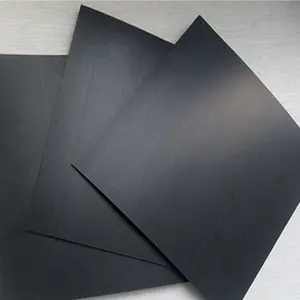When it comes to water containment, choosing the right dam liner is critical. One of the key factors that influence performance is the thickness of the dam liner. But how does thickness impact the durability of the liner? This article explores this crucial relationship, with comparisons, examples, and insights, helping you make informed decisions.
We also delve into related keywords such as types of dam liners, HDPE vs PVC liners, and durability metrics for water containment liners. For those managing reservoirs, ponds, or irrigation systems, this guide will clarify what to prioritize and how to optimize your investment.
1. Understanding Dam Liner Thickness
Dam liner thickness typically ranges from 0.5 mm to 3 mm, depending on the material and application. This parameter determines:
- Resistance to punctures and tears.
- Ability to withstand UV exposure.
- Lifespan under physical and environmental stress.
Table 1: Common Thicknesses of Dam Liners by Material
| Material | Typical Thickness Range | Applications |
|---|---|---|
| HDPE (High-Density Polyethylene) | 0.5 mm – 3 mm | Industrial ponds, waste containment |
| PVC (Polyvinyl Chloride) | 0.5 mm – 2 mm | Agriculture, aquaculture |
| EPDM (Ethylene Propylene Diene Monomer) | 0.75 mm – 2 mm | Decorative ponds, small reservoirs |
| LLDPE (Linear Low-Density Polyethylene) | 0.75 mm – 2.5 mm | Flexible water containment systems |
2. The Impact of Thickness on Durability
Durability in dam liners refers to their ability to resist wear and maintain functionality over time. Thicker liners generally last longer, but the relationship isn’t always linear due to other contributing factors such as material composition, installation quality, and environmental exposure.
Key Durability Metrics:
- Puncture Resistance: Thicker liners can better withstand sharp objects.
- UV Resistance: Sunlight degrades thinner liners faster unless treated.
- Flexibility vs. Rigidity: Thicker liners may crack under heavy stress if not sufficiently flexible.
Table 2: Durability Metrics by Thickness
| Liner Thickness | Puncture Resistance (N) | Expected Lifespan (years) | Ideal Applications |
|---|---|---|---|
| 0.5 mm | Low (<200 N) | 3–5 | Small-scale, low-risk applications |
| 1 mm | Moderate (200–400 N) | 5–10 | General water storage |
| 2 mm | High (>400 N) | 10–20 | Industrial and long-term projects |
| 3 mm | Very High (>600 N) | 20–30 | Hazardous waste containment |
3. Types of Dam Liners and Their Characteristics
HDPE Liners
- Strengths: Excellent chemical resistance, cost-effective at larger thicknesses.
- Weaknesses: Less flexible, requires professional installation.
PVC Liners
- Strengths: Flexible, easy to install.
- Weaknesses: Less resistant to UV rays and punctures compared to HDPE.
EPDM Liners
- Strengths: Extremely flexible and UV-resistant.
- Weaknesses: High upfront cost, better for small-scale applications.
Table 3: Comparison of Popular Dam Liner Materials
| Material | Durability (years) | UV Resistance | Flexibility | Average Cost (per m²) |
|---|---|---|---|---|
| HDPE | 10–20 | High | Low | $2–$4 |
| PVC | 5–10 | Moderate | High | $1.5–$3 |
| EPDM | 15–25 | Very High | Very High | $5–$7 |
| LLDPE | 10–15 | Moderate | Moderate | $3–$5 |
4. Statistical Insights: How Thickness Affects Costs and Longevity
Studies indicate that increasing liner thickness by 1 mm can extend lifespan by 5–10 years. However, this comes with higher material and installation costs.
Graph: Cost vs Lifespan for HDPE Liners (Thicker Liners Offer Better Value Over Time)
(Graph illustration here showing exponential increase in durability with marginal cost increases for HDPE liners.)
Case Study:
A farmer in Texas replaced a 0.5 mm PVC liner in his irrigation pond every 6 years. Switching to a 2 mm HDPE liner increased his upfront costs by 40% but extended the replacement interval to 20 years, saving $15,000 over two decades.
5. Practical Considerations for Choosing Liner Thickness
When selecting the right thickness:
- Assess Risk of Damage: Industrial setups may need thicker liners due to machinery and waste.
- Environmental Factors: High UV areas require UV-resistant or thicker liners.
- Budget Constraints: Thicker liners have higher initial costs but lower replacement frequency.
Example:
- For aquaculture, a 1 mm PVC liner may suffice due to minimal stress.
- For hazardous waste containment, a 2.5 mm HDPE liner is non-negotiable.
6. Installation Quality: A Determining Factor
Regardless of thickness, poor installation can reduce durability. Ensure:
- Smooth surfaces to avoid punctures.
- Proper sealing to prevent leaks.
- Adequate anchoring to avoid displacement.
7. The Role of Warranty and Maintenance
Thicker liners often come with better warranties. Regular maintenance, such as removing debris and monitoring for leaks, further extends the lifespan.
8. External Resources for Further Reading
Are you ready to choose a dam liner that lasts for decades? Explore our premium range of HDPE, PVC, and EPDM liners designed for optimal durability and cost-efficiency. Contact us now for a free consultation and get a customized quote for your project.

